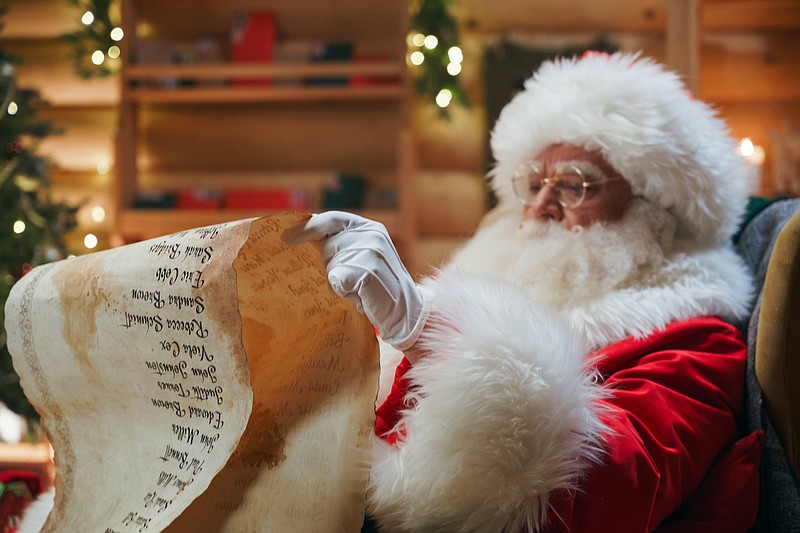Millions of children worldwide will awaken with delight on a special day in December or January to find toys and goodies, delivered by their own version of our Santa Claus. In America, we imagine a jolly, rotund figure in red trimmed with fur and swathed in fragrant pipe smoke. But this elusive nocturnal gift-giver takes many forms and names in many cultures, each tracing its origin back to an actual 4th-century cleric from present-day Turkey renowned for his piety, courage, and personal generosity.
Saint Nicholas was the overseer of the Christian church in Myra, a city in Asia Minor near modern-day Demre. No documentary record survives, but his existence and service to the church are well attested. According to tradition, his parents died while Nicholas was a young man, leaving him an inheritance that he devoted to the assistance of the poor and infirm. He ascended to the office of Bishop at a young age, perhaps around 300 AD.
Nicholas is believed to have been arrested and likely tortured during the persecution of Christians by the Roman emperor Diocletian in 303 AD, and gained his freedom following the Edict of Constantine recognizing Christianity in 313. He was hardly the jolly elf of our imagination but rather a fierce defender of the faith who refused to renounce his belief. His Greek name, Nikolaos, meant "victor of people" or "peoples' champion".
Nicholas was apparently well respected, as he reportedly attended the Council of Nicaea in 325 AD, the first large-scale ecumenical gathering of bishops that established a consensus on foundational doctrines and excised heretical beliefs.
An oft-repeated legend attests to his generosity and explains some of the enduring Christmas traditions associated with him. The story tells of the destitute father of three daughters who could not afford a dowry and was compelled to sell them instead into servitude. On three occasions, the generous Bishop anonymously tossed a bag of gold coins through their open window and into a stocking drying by the fire. Many cultures adopted some variation of treats or gifts magically deposited in shoes or stockings on December 6 (the Feast Day of Saint Nicholas), December 25, or January 6.
Following his death in 343, Nicholas' fame continued to spread, engendering numerous stories of miracles. By the 14th century, St. Nicholas was widely revered in both the Eastern and Western churches, becoming the patron of sailors and seafarers, children, prisoners and dozens of other classes and occupations including, interestingly, pawnbrokers.
During the late Middle Ages, Franciscan friars gathered poor villagers and provided them with low-interest loans to help them buy food. These benevolent lending societies, known as "montes pietatius", became the precursors of the pawnbroking guild. The symbol of pawnbrokers, three gold balls, reputedly derives from the three sacks of gold delivered by Bishop Nicholas.
St. Nick encountered stiff opposition from Martin Luther during the Protestant Reformation. Reformers eschewed recognition of saints, and Luther instead attempted to invoke an image of the Baby Jesus as a gift-giver. This image was adopted in Germanic countries especially as Christkindl or Christ Child (anglicized as Kris Kringle), although over time the representation of Christkindl inexplicably morphed into a blond female angel. This lovely tradition also sparked what might have been the earliest commercialization of Christmas, as hundreds of local gift markets called Christkindlmarkets sprung up in 15th-century European villages to satisfy consumer demand for holiday presents.
In the end, the appeal of St. Nicholas was too strong to suppress and instead spawned variants in different cultures that survive in much of the world today. Scholars are divided as to whether Santa Claus came to America via Dutch settlers of New York (New Amsterdam) as Sinterklaas, or by Pennsylvania Germans in the form of Sankt Niklaus. What is known is how our uniquely American version of St. Nick evolved, thanks in part to a man named John Pintard.
Pintard, a failed stockbroker but enthusiastic civic leader, founded the New York Historical Society in 1809, naming St. Nicholas as its patron. His friend Washington Irving soon published a satirical history of New York in which he imagined Saint Nicholas as a pipe-smoking deliverer of gifts and switches, levitating in a flying wagon pulled by a single reindeer.
In 1822, Professor of Biblical Languages Clement Clarke Moore penned a poem for his children called "A visit from Saint Nicholas" describing a white-bearded man riding a sleigh behind 8 reindeer. Moore furnished many of our contemporary details: "He had a broad face and a little round belly, that shook when he laughed like a bowl full of jelly". The poem is better known as "The night before Christmas".
By the 1850s, merchandising took over. Stores published advertising directly targeting Christmas shoppers. Between 1864 and 1886, political satirist Thomas Nast depicted St. Nick in drawings for Harper's Weekly magazine. By the 1920s, Santa Claus nearly always appeared in a red suit lined with white fur. Then in 1931, Thomas Haddon launched an ad campaign for Coca-Cola featuring the classic Santa we envision today. Haddon's Santa holding a Coke appeared in 1964.
What is most remarkable is that despite the global disparities in the various manifestations of Santa, all are at their core a celebration of generosity and expression of care for others and, especially, for children. And all owe a debt to a generous and faithful 4th-century Anatolian priest.
Merry Christmas to all.
Christopher A. Hopkins is a chartered financial analyst and co-founder of Apogee Wealth Advisors.
